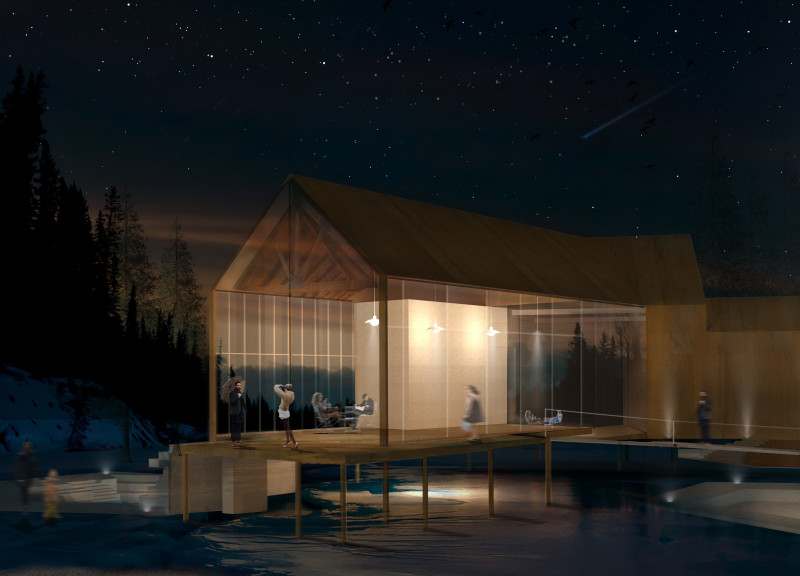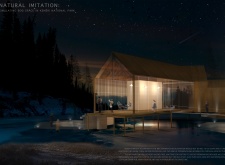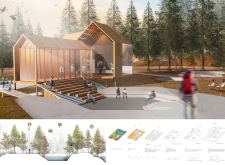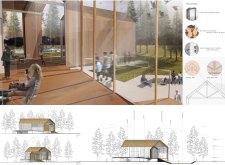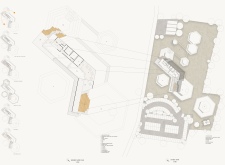5 key facts about this project
The Kemeri National Park Visitor Center is situated in a unique ecological setting, designed to engage visitors with the distinctive bog environments found in the park. Its purpose is twofold: to educate the public about these fragile ecosystems and to serve as a communal gathering space. The design concept revolves around simulating the bog experience, creating an invitation for exploration and interaction within this carefully crafted environment.
Design Concept
The design focuses on immersing visitors in the bog experience without requiring them to access the natural terrain. This strategy emphasizes visual engagement as the primary mode of interaction. The Visitor Center is raised off the ground, allowing people to enjoy changing perspectives of the artificial bog and its surroundings. Elevation adds to the experience, enhancing the relationship between visitors and the landscape.
Spatial Configuration
Careful consideration has been given to the layout of the Visitor Center. Various spaces have been planned to serve diverse functions, including outdoor exhibitions, a community amphitheater, and areas for children to play. This multifunctional approach encourages visitors to interact with the site and its exhibits. Pathways guide people through different views, deepening their engagement with the information provided.
Material Selection
Materials play an important role in the design. Clear glass is used to create transparency, allowing visitors to see the landscape while inside the building. Pine wood, sourced locally, brings warmth to the structure and facilitates construction. Precast concrete is chosen for its reliability and precision, integrating well into the overall design while ensuring quality control.
Visual Detailing
The geometric forms of the Visitor Center are designed to connect with the natural features of the bog. Seasonal programming and varying information keep the experience fresh and interesting throughout the year. This focus on education and interaction encourages visitors to appreciate the ecological intricacies of the bog environment, adding depth to their understanding and experience.


